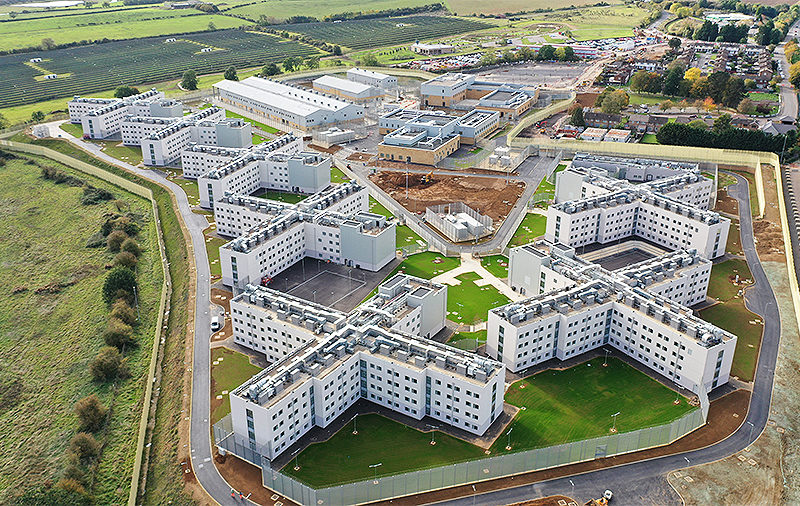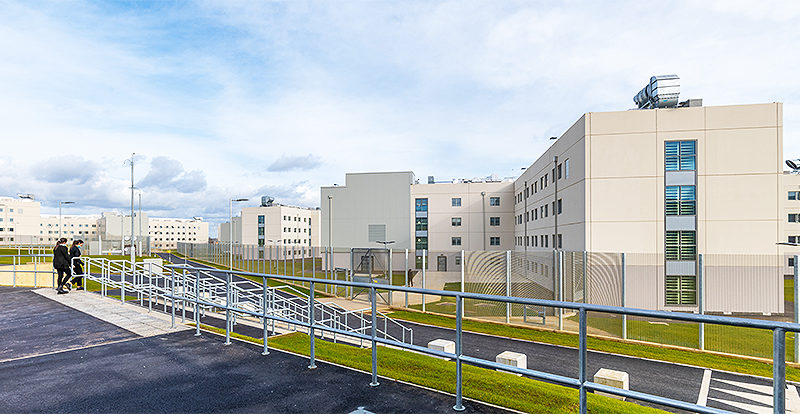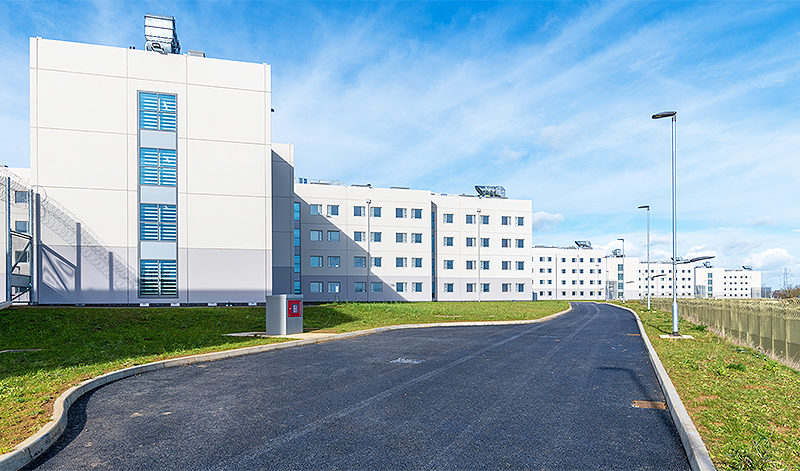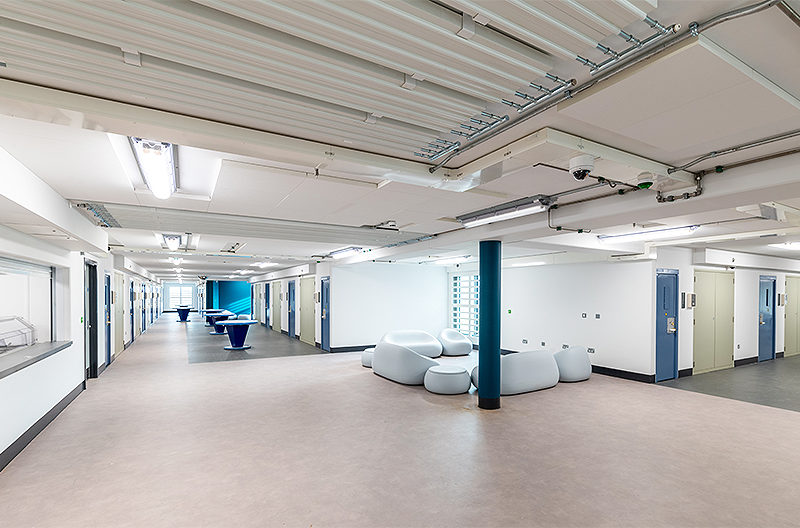Nicola Pearson, a Consultant at GIIG, part of nima, explains how public sector clients and their supply chains can start to transform their information management.
GIIG
Information management – what it is and why it matters
The built environment is something that surrounds us, defining our daily lives. If we consider a prison, or a hospital, there are a vast number of data points and information linked to that built asset that are critical to ensuring its efficiency, sustainability, safety and security. Now, imagine that those data and information points are stored in different ways, on different systems, within different parts of the supply chain.
This is where information management (IM) comes in. Put simply, IM is a process for integrating all the information and data required to plan, design, build and operate built assets, defined by international standard ISO 19650.
The challenge
The built and managed environment in the UK is increasingly seeking to align with these international standards and good practice in IM. However, in an industry with so many information exchanges, and so many sector-specific technologies, only so much can be achieved by individual organisations.
We need industry-wide change. For public sector clients and their supply chains, the benefits will be increased ease of access to critical asset information at every stage, from planning through to operation.
The solution
nima’s (formally the UK BIM Alliance) national presence, coupled with its wide network of regional and specialist sector groups, makes it well placed to support this change. As a recently-incorporated part of nima, GIIG has strengthened the organisation’s ability to provide strategic consultancy support to public, private and third-sector organisations in design, construction and asset management.
At GIIG, we work across the built and managed environment to improve the ability of organisations to exchange and use information in ways that are independent of the technologies used to deliver it.
Start with the people and what they do
Information management is affected by the internal processes of an organisation; the availability of people with the right skills, knowledge and experience; and the technologies that are deployed. It is hard to get people to change and is so much more appealing to deploy a new technology. However, the expected benefits will never be fully realised until the necessary processes and people are in place.
It is for this reason that GIIG has developed a gap finder tool (‘IMPACT’) with an ‘activity’ lens, to help organisations to identify the gaps in their processes, missing roles or training needs.
The Information Management Platform – a roadmap for your system architecture
On a larger scale, organisations increasingly need an unbroken and trustworthy digital record of their assets. GIIG is contributing to this solution by supporting client organisations to implement an Information Management Platform (IMP).
An IMP is a modular, software-agnostic approach designed to provide organisations with the capability to own, manage and exploit their asset data.
The IMP approach offers multiple benefits. First, data and information may be curated and re-used many times to benefit the organisation and those it services. Second, there will be a reduction or elimination of time-consuming and error-prone ‘manual handling’ of data, releasing staff for more valuable work; and third, it will trigger an improvement in data quality, completeness and reliability.
To help organisations specify the performance of required technologies, GIIG has produced functional specifications and a simple tool to identify gaps in the technology roadmap. At the heart of this IMP approach are three storage modules:
1. Reference data library – to share information within an organisation and with its supply chain. Examples include naming, classification and standards.
2. Immutable container store – an unchangeable record of information exchanges.
3. Structured data repository – this database communicates with other enterprise systems.
In addition to these storage modules are integrations and automations, which manage access from external systems, integrate the platform with other enterprise systems and automate the assurance of received data.
As clients and their supply chains adopt the IMP architecture, it will help them to track assets through life, identifying when interventions are made and what materials have been used.
Concluding thoughts
It’s clear from GIIG’s work that data and information should be at the core of any organisation working in design, construction and asset management, supporting the people, processes and decisions that form the foundation of any IM system. Getting to that point is the challenge.
The good news is that the IMP has been designed to be adopted incrementally, realising benefits at each stage. In the case study which follows, James Franklin from Kier provides an insight into the scale of the challenge of designing, constructing and managing HMP Five Wells and their use of digital tools to make this possible.
Information Management in Practice
James Franklin, Digital Construction Lead for Kier Strategic Projects, explains how Kier worked closely with the Ministry of Justice to ensure robust information management sat at the heart of HMP Five Wells.
Introducing HMP Five Wells
HMP Five Wells is an adult male Category C resettlement prison, designed to enhance rehabilitation. Kier was contracted by the Ministry of Justice (MoJ) to build this prison as part of its wider plans to provide an additional 20,000 safe, secure and modern prison places across the prison estate. As the project integrator, Kier was not only responsible for construction, but also for aligning the project’s requirements and training the supply chain to deliver against them.
The prison itself involved nine buildings and 1700 cells completed in just 45 weeks with no reportable accidents.
A complex construction process
Kier is well versed in working on projects of this scale, and our priority is to always make both our construction process and our client’s subsequent management of the asset as smooth and efficient as possible. Our early engagement with the MoJ allowed us to adopt a collaborative approach, helping ensure open lines of communication about their information management requirements and tightening the relationship between client and supplier.
To deliver efficiencies on this project, we adopted a Design for Manufacture and Assembly (DfMA) approach. However, this still involved more than 75,000 precast concrete components spanning three suppliers and six factories. These precast components were optimised to reduce further work following installation from onsite traders with, for example, shower trays being precast into floor units. Despite this, it would have been nigh on impossible to manually monitor the progress of each individual component as it moved through the manufacture and construction process. A key part of our strategy was, therefore, standardisation, which aided project efficiency by designing repeatable components. By using a DfMA process, we were also able to ensure high levels of design accuracy, in turn, facilitating a smooth handover from design to construction.
Maximising information management
This is where information management really came into its own on the project, allowing us to track each individual component on its journey from supplier production to installation. Once construction was complete, this process also meant that the client can continue to track each component throughout the entire lifecycle of the built asset, providing efficiencies to their asset management process. As part of this process, we used Dalux to allow the project team to digitally track the journey of any component in the project, with live dashboards making the system transparent by indicating how well it was being used.
Additionally, Glider’s information management system was used to collate and validate data from each trade contractor working on the project. This formed an asset information model that verified deliverables across site, covering 68 packages from 49 subcontractors and including 2.8 million data points.
Concluding thoughts
I’m proud to say that our digital handover to the MoJ was 100% compliant. This enabled a smooth transition to operations and means that the client can use asset data to inform future decisions, creating a positive whole-life outcome.
We are always looking for ways to innovate and increase efficiencies in construction and asset management and are using the lessons learned from HMP Five Wells to apply to other projects, providing continuous improvement for our clients. One such project takes the form of a partnership with the MoJ on a Digital Twin scheme. This scheme leverages the data set we handed over at HMP Five Wells, focusing on energy-use reduction in lifecycle operation within a secure environment, aligned with sustainability goals and the net-zero agenda.
Looking ahead, we’re keen to see public sector bodies and their supply chains working together to apply a robust information management approach to specification, procurement and asset management. Our experiences at HMP Five Wells and our ongoing work with the MOJ, including at HMP Millsike, make us well placed to share knowledge and insight. If we can all adopt a more collaborative and consistent approach to this challenge, the dividends in terms of future built asset efficiency and productivity will be clear.












